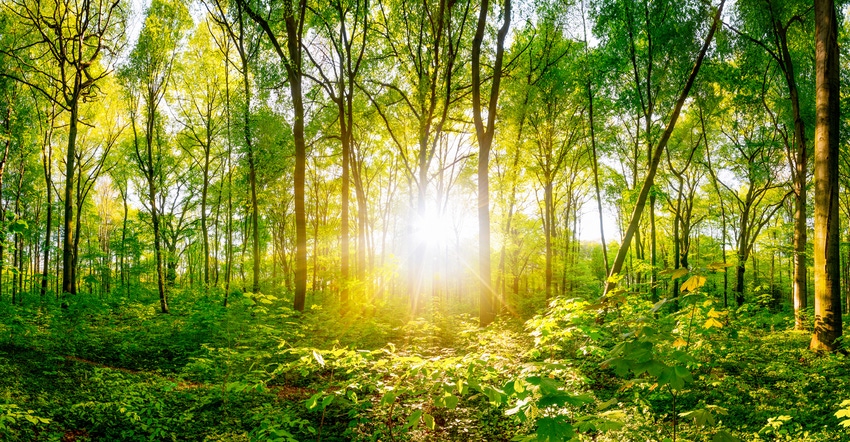April 13, 2017

Riparian forests are located along perennial and intermittent streams where deep soils are commonly found. They differ from upland forests with regard to topography, soil types, function and tree species.
The benefits of riparian forests are many, including filtering runoff from adjacent fields, reducing the speed of damaging floodwaters, recharging aquifers, trapping nutrients and organic matter, maintaining stream-bank stability, minimizing erosion, providing wildlife habitat, lowering stream temperatures, contributing to aesthetics and recreational opportunities, and providing floral and edible crops — just to name a few.
Nutrient trapper
One of the major ecological benefits of riparian forests is trapping nutrients and organic debris. With growing concerns about phosphorus and nitrate levels in surface and subsurface runoff, riparian forests can be an effective and ecologically sound approach to reducing these levels. Riparian forests are good at trapping nutrients. As runoff leaves a field or adjacent land and flows through vegetation, water velocity slows, allowing soil particles, nutrients, chemicals and bacteria to settle out. This settling reduces sediment loads in nearby streams, lakes and rivers.
Also, nitrogen trapped in riparian forests can be broken down by microbes via the nitrogen cycle and converted into usable forms for plants. Trapping excess P and N helps minimize the potential for “nutrient-rich” water, which can result in extensive algal blooms contaminating the water supply and seriously affecting aquatic organisms.
How do you plant, maintain or enhance a riparian area? Establishment of a riparian forest needs to be site-specific and must take into consideration adjacent land use, runoff patterns, soil types, the existing water table and landowner objectives. Regardless of the site, all riparian areas should have a diverse tree and shrub component, stable bank vegetation, established understory, and deep forest litter layers.
While every site is different, here are some general recommendations you can follow.
• Increase with slope. Generally, riparian forest buffers should increase as slope increases or runoff increases, or if you want to provide wildlife habitat.
• Plan for zones. A well-designed riparian forest buffer includes three horizontal zones. Zone 1 is nearest the water body; its main function is stream-bank stability, and it should be at least 15 feet wide. Zone 2 is the filtration zone and should be no narrower than 50 feet. This area can be harvested and thinned from time to time, and can be a source of supplemental income for firewood and other wood products. Zone 3 is the initial filtration zone converting concentrated flow to sheet flow. This zone consists of dense grasses and forbs that can be used for grazing or forage and should be at least 15 feet wide.
• Plant right. Riparian forest enhancement can be accomplished through planting proper trees and shrubs, and making sure to create conditions for even sheet flow or subsurface flow through the area.
• Get help. Several state and federal technical and financial assistance programs are available for riparian forest establishment and enhancement. For additional information, check out the USDA National Agroforestry Center, The Center for Agroforestry and Natural Resources Conservation Service websites.
Miller is a horticulture professor at Joliet Junior College in Joliet and a senior research scientist in entomology at The Morton Arboretum in Lisle. Email your tree questions to him at [email protected].
About the Author(s)
You May Also Like




